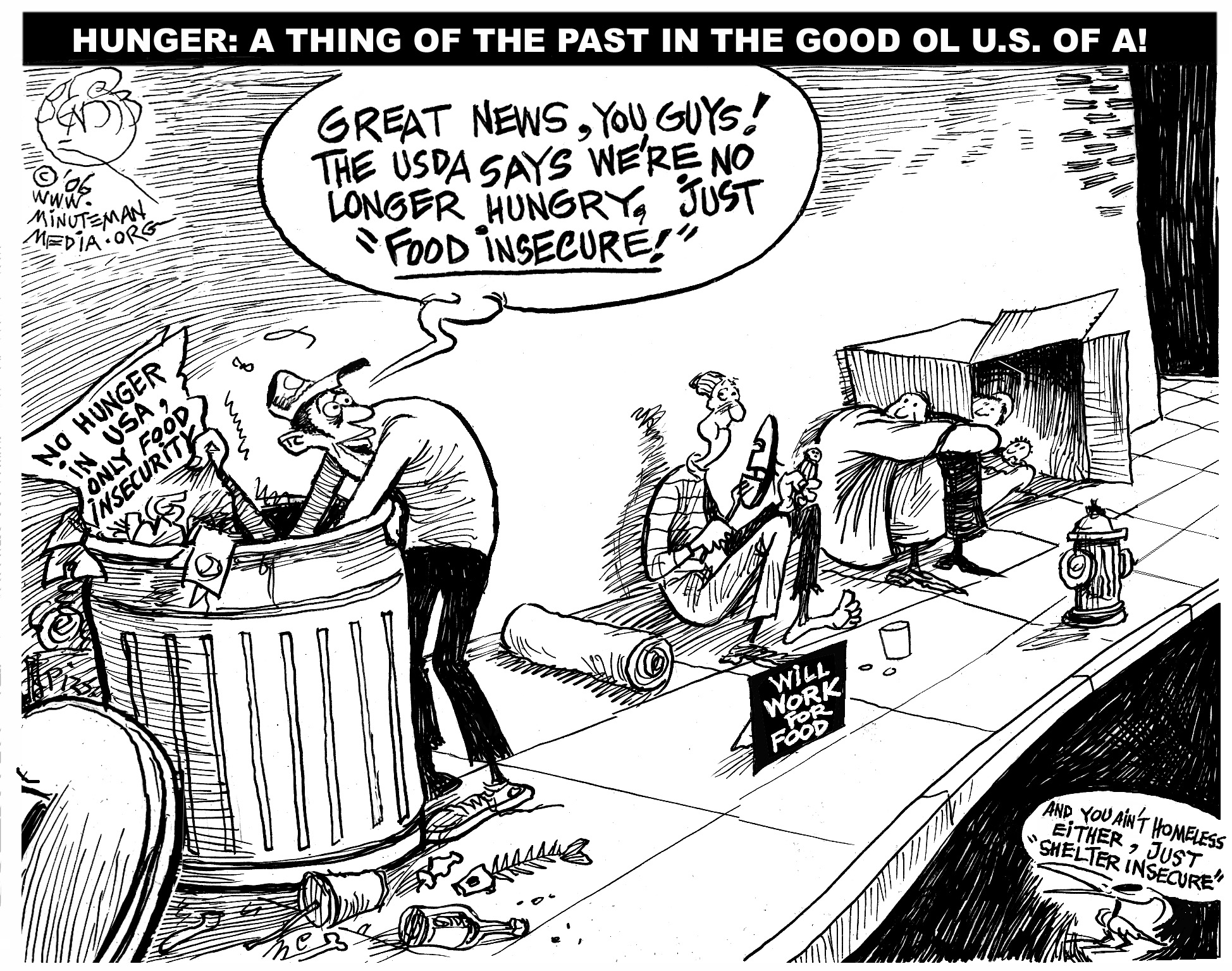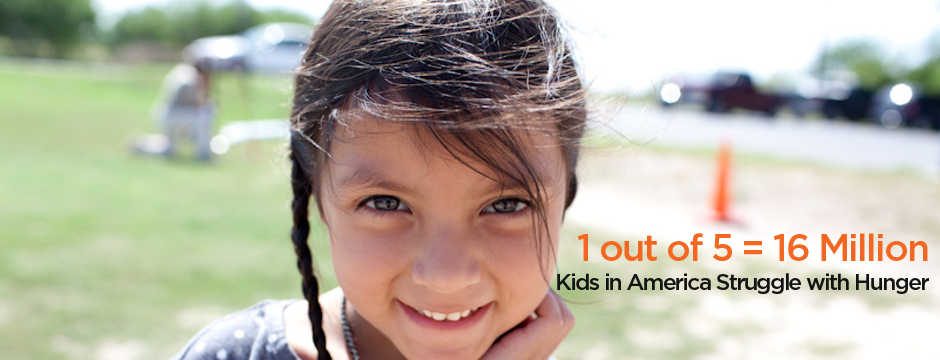 Hunger in the United States is an issue that affects millions of Americans, including some who are middle class, or who are in households where all adults are in work. Research from the Food Safety and Inspection Service found that 14.9% of American households were food insecure during 2011, with 5.7% suffering from very low food security. Journalists and charity workers have reported further increased demand for emergency food aid during 2012 and 2013.The United States produces far more food than it needs for domestic consumption - hunger within the U.S. is caused by some Americans having insufficient money to buy food for themselves or their families. Hunger is addressed by a mix of public and private food aid provision. Both types of aid have been expanding in the 21st century, with hunger relief efforts by the government growing faster than aid provided by civil society.
Hunger in the United States is an issue that affects millions of Americans, including some who are middle class, or who are in households where all adults are in work. Research from the Food Safety and Inspection Service found that 14.9% of American households were food insecure during 2011, with 5.7% suffering from very low food security. Journalists and charity workers have reported further increased demand for emergency food aid during 2012 and 2013.The United States produces far more food than it needs for domestic consumption - hunger within the U.S. is caused by some Americans having insufficient money to buy food for themselves or their families. Hunger is addressed by a mix of public and private food aid provision. Both types of aid have been expanding in the 21st century, with hunger relief efforts by the government growing faster than aid provided by civil society.
 Additionally, Almost 16 million children lived in food-insecure households in 2012. Schools throughout the country had 21 million children participate in a free or reduced lunch program and 11 million children participate in a free or reduced breakfast program. The extent of American youth facing hunger is clearly shown through the fact that 47% of SNAP (Supplemental Nutrition Assistance Program) participants are under the age of 18. The states with the highest rate of food insecure children were North Dakota, Minnesota, Virginia, New Hampshire, and Massachusetts as of 2012. Like children, the elderly population of the United States are vulnerable to the negative consequences of hunger. Senior citizens are considered to be of 65 years of age or older. In 2011, there was an increase of .9% in the number of seniors facing the threat of hunger from 2009. This resulted in a population of 8.8 million seniors who are facing this threat; however, a total of 1.9 million seniors were dealing with hunger at this time.
Additionally, Almost 16 million children lived in food-insecure households in 2012. Schools throughout the country had 21 million children participate in a free or reduced lunch program and 11 million children participate in a free or reduced breakfast program. The extent of American youth facing hunger is clearly shown through the fact that 47% of SNAP (Supplemental Nutrition Assistance Program) participants are under the age of 18. The states with the highest rate of food insecure children were North Dakota, Minnesota, Virginia, New Hampshire, and Massachusetts as of 2012. Like children, the elderly population of the United States are vulnerable to the negative consequences of hunger. Senior citizens are considered to be of 65 years of age or older. In 2011, there was an increase of .9% in the number of seniors facing the threat of hunger from 2009. This resulted in a population of 8.8 million seniors who are facing this threat; however, a total of 1.9 million seniors were dealing with hunger at this time.
